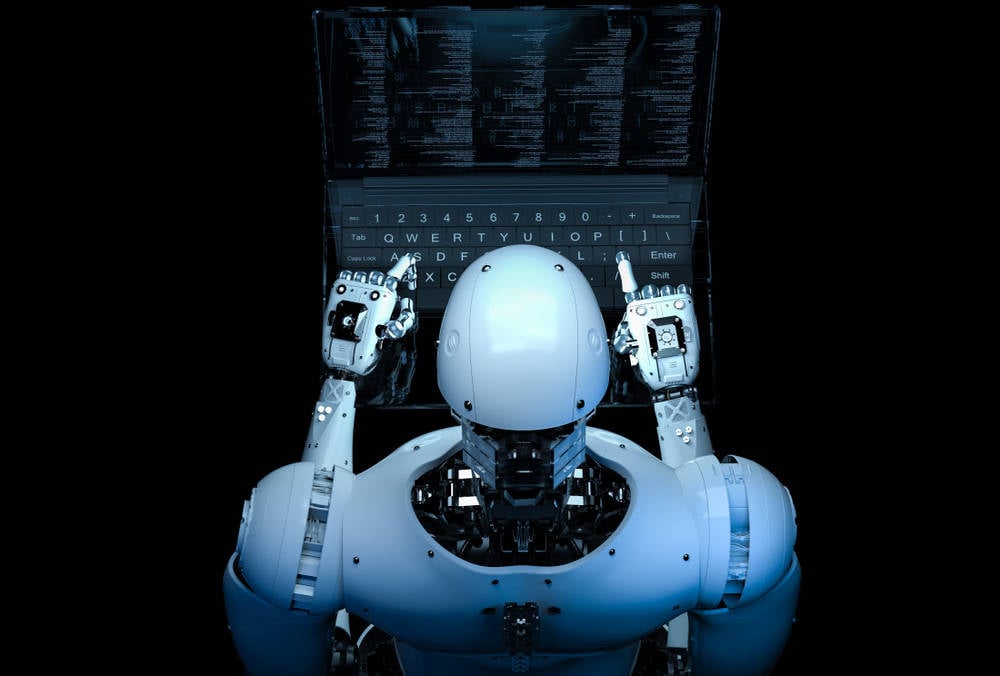IBM Compiles Dataset To Teach Software How Software Is Made: 14m Code Samples, Half Of Which Actually Work

Think IBM has assembled a massive silo of source code for teaching machine-learning programs about programming.
Dubbed Project CodeNet, the set contains, we're told, 14 million code samples totaling 500 million lines in more than 55 programming languages, from Java, C, and Go to COBOL, Pascal, and FORTRAN. Truth be told, more than three-quarters of it all is in C++ and Python.
This source code wasn't taken from production nor in-development applications: it was collected from entries submitted to two programming contests organized in Japan: Aizu and AtCoder. In these contests, competitors are challenged to write the necessary code to turn a given set of inputs into a set of desired outputs. About half of the samples work as expected, and the rest are labeled as either wrong solutions, non-building, or buggy.
Ideally, you would train an AI tool to favorably identify the good programs, and reject the bad ones, for example. For seven million of the samples, the input and required output is included.
Big Blue wants CodeNet to follow in the footsteps of ImageNet, the database of pictures and labels for training computer-vision applications, and become the leading dataset for teaching software to understand the blueprints of software – what code actually looks like, and how it compares to other code. It's hoped CodeNet can be used to train development tools that can, for instance, search application and library source for desired routines, or perhaps translate from one language to another, or recognize faulty or correct implementations.
"IBM believes Project CodeNet will serve as a valuable benchmark dataset for source-to-source translation and transitioning legacy codebases to modern code languages, helping businesses speed up their application of AI," the biz gushed in announcing the project as part of its Think online conference this week.
- IBM wheels out AutoSQL, Watson Orchestrate in bid to fend off cloud irrelevance
- Can your AI code be fooled by vandalized images or clever wording? Microsoft open sources a tool to test for that
- More than 1,000 humans fail to beat AI contender in top crossword battle
- US Army develops natural-language voice-command AI for robots, tanks, etc. For search'n'rescue. For now
The IBM and MIT-IBM Watson AI Lab team behind the dataset has produced a paper [PDF] describing their work, and put all the collated material on the project's GitHub page.
"This dataset is not only unique in its scale, but also in the diversity of coding tasks it can help benchmark: from code similarity and classification for advances in code recommendation algorithms, and code translation between a large variety of programming languages, to advances in code performance improvement techniques," the boffins concluded in their report. ®
From Chip War To Cloud War: The Next Frontier In Global Tech Competition
The global chip war, characterized by intense competition among nations and corporations for supremacy in semiconductor ... Read more
The High Stakes Of Tech Regulation: Security Risks And Market Dynamics
The influence of tech giants in the global economy continues to grow, raising crucial questions about how to balance sec... Read more
The Tyranny Of Instagram Interiors: Why It's Time To Break Free From Algorithm-Driven Aesthetics
Instagram has become a dominant force in shaping interior design trends, offering a seemingly endless stream of inspirat... Read more
The Data Crunch In AI: Strategies For Sustainability
Exploring solutions to the imminent exhaustion of internet data for AI training.As the artificial intelligence (AI) indu... Read more
Google Abandons Four-Year Effort To Remove Cookies From Chrome Browser
After four years of dedicated effort, Google has decided to abandon its plan to remove third-party cookies from its Chro... Read more
LinkedIn Embraces AI And Gamification To Drive User Engagement And Revenue
In an effort to tackle slowing revenue growth and enhance user engagement, LinkedIn is turning to artificial intelligenc... Read more

